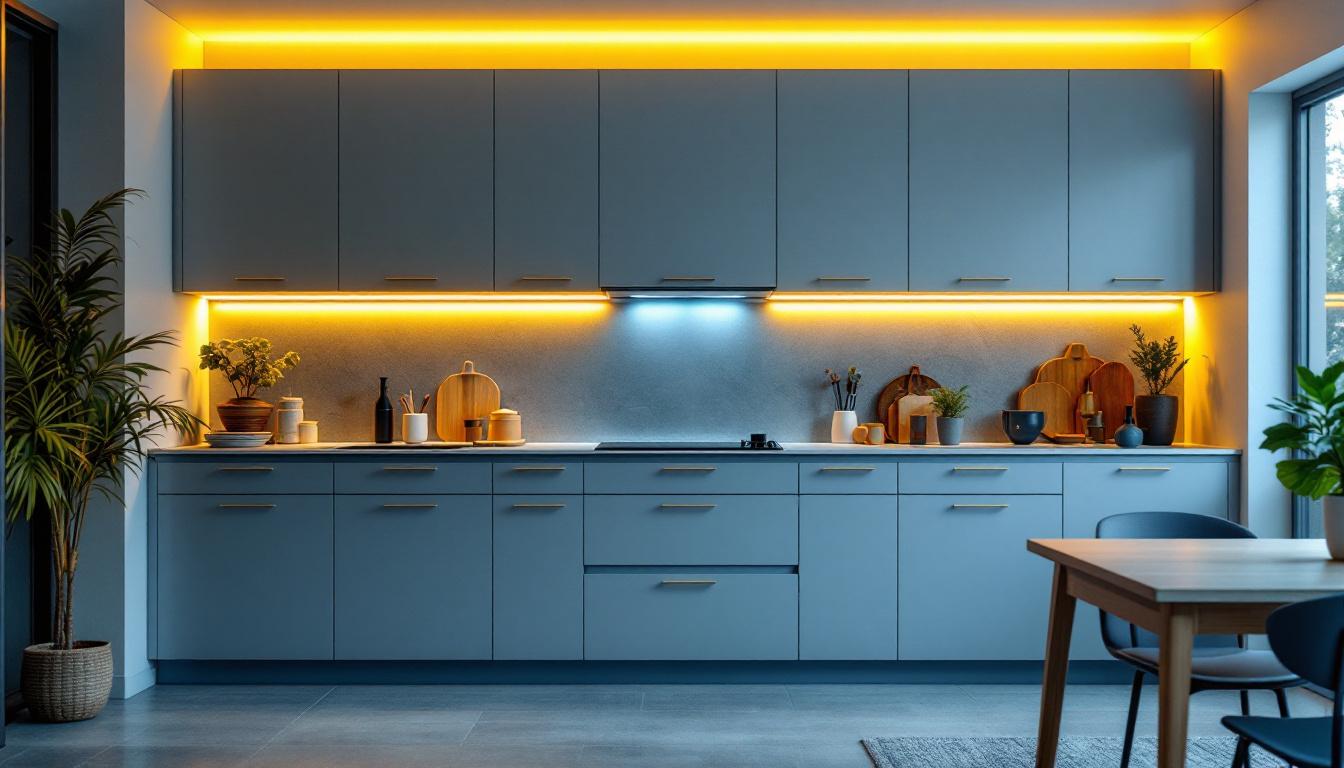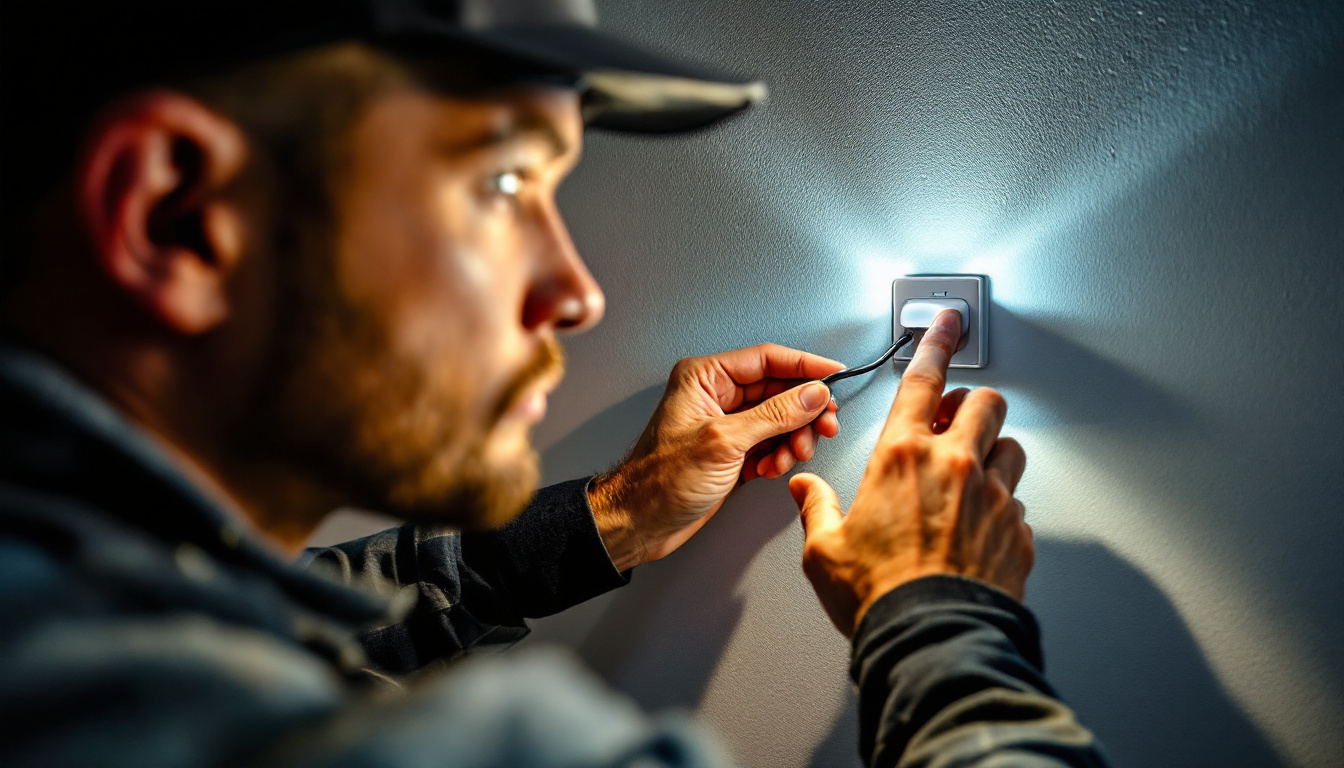
In recent years, the kitchen has transformed from a mere cooking space into a multifunctional area that serves as a gathering point for family and friends. As a result, the importance of effective lighting solutions has surged, particularly in the realm of kitchen cabinet lighting. Among the various options available, LED lighting stands out for its energy efficiency and versatility. This article delves into the impact of LED kitchen cabinet lighting on energy efficiency, exploring its benefits, installation considerations, and the broader implications for sustainable living.
LED lighting offers a myriad of advantages that make it an attractive choice for kitchen cabinet illumination. From energy savings to aesthetic enhancements, understanding these benefits can help lighting contractors make informed decisions for their clients.
One of the most compelling reasons to opt for LED lights is their energy efficiency. Compared to traditional incandescent or fluorescent bulbs, LEDs consume significantly less power while providing the same amount of light. This reduction in energy consumption not only lowers utility bills but also contributes to a decrease in overall carbon footprint. For contractors, emphasizing these savings can be a strong selling point when discussing options with clients. Furthermore, many LED products are now designed to be dimmable, allowing homeowners to adjust the brightness according to their needs and preferences, further optimizing energy use.
LED lights are known for their impressive lifespan, often lasting up to 25,000 hours or more. This longevity translates into reduced maintenance costs, as homeowners will not need to replace bulbs as frequently. For contractors, this means fewer callbacks for bulb replacements and a more satisfied client base. Additionally, the durability of LED fixtures makes them less prone to damage, further enhancing their appeal. Unlike traditional bulbs, LEDs are resistant to shock and vibrations, making them an ideal choice for busy kitchen environments where accidents may occur. This resilience not only ensures consistent performance but also instills confidence in homeowners regarding their investment.
Another significant advantage of LED kitchen cabinet lighting is its versatility in design. LEDs come in various shapes, sizes, and color temperatures, allowing for a wide range of creative applications. Whether it’s under-cabinet lighting, interior cabinet illumination, or accent lighting, LEDs can be seamlessly integrated into any kitchen design. This adaptability enables contractors to cater to diverse aesthetic preferences, enhancing the overall kitchen experience. Moreover, the ability to choose from warm to cool light tones means that homeowners can create the perfect ambiance for cooking, entertaining, or simply enjoying a quiet evening at home. The use of LED strip lights can also add a modern touch, providing a sleek and unobtrusive lighting solution that highlights the beauty of cabinetry and countertops.
While the benefits of LED lighting are clear, proper installation is crucial to maximize its advantages. Lighting contractors must consider several factors to ensure that LED kitchen cabinet lighting is installed effectively and efficiently.
When selecting LED fixtures for kitchen cabinets, it is essential to consider the specific needs of the space. Options include strip lights, puck lights, and recessed lighting, each offering unique benefits. Strip lights are ideal for long runs, providing even illumination along countertops. Puck lights, on the other hand, can create focal points within cabinets, highlighting decorative items or dishware. Understanding the intended use and design of the kitchen will guide the selection of appropriate fixtures. Additionally, energy efficiency ratings and color temperature should be taken into account, as these factors can greatly influence the ambiance of the kitchen. Warmer tones tend to create a cozy atmosphere, while cooler tones can enhance a modern aesthetic.
Proper wiring and power supply are critical components of a successful LED installation. Unlike traditional bulbs, LEDs often require specific drivers to regulate voltage and current. Contractors should ensure that the power supply is compatible with the chosen fixtures to avoid flickering or premature burnout. Additionally, planning the wiring layout in advance can streamline the installation process, reducing labor time and potential complications. It’s also advisable to consider the use of dimmer switches, which can provide flexibility in lighting levels and contribute to energy savings. By integrating smart technology, homeowners can control their lighting remotely, adding an extra layer of convenience and efficiency to their kitchen environment.
The placement of LED lights is vital for achieving optimal illumination. Strategically positioning lights to minimize shadows and maximize coverage can enhance the functionality of kitchen cabinets. For instance, under-cabinet lights should be installed close to the front edge of the cabinets to provide direct lighting on countertops. Similarly, interior cabinet lighting should be placed to illuminate the contents without creating glare. Thoughtful placement not only improves visibility but also elevates the overall aesthetic of the kitchen. It’s important to consider the height of the cabinets and the typical tasks performed in the kitchen; for example, if a homeowner frequently uses the countertop for meal prep, ensuring that the light is directed towards that area can significantly improve usability. Moreover, layering different types of lighting—ambient, task, and accent—can create a well-balanced environment that is both functional and visually appealing.
The shift towards LED kitchen cabinet lighting is not merely a trend; it reflects a broader movement towards energy efficiency and sustainability. Understanding the environmental implications of LED lighting can empower contractors to advocate for these solutions more effectively.
As mentioned earlier, LED lights consume significantly less energy than traditional lighting options. This reduction in energy consumption contributes to lower greenhouse gas emissions, making LEDs a more sustainable choice. By promoting LED lighting, contractors can play a pivotal role in helping clients reduce their environmental impact while enjoying the benefits of modern lighting technology.
Incorporating LED lighting into kitchen designs aligns with sustainable building practices. Many homeowners are increasingly concerned about their environmental footprint and are seeking ways to make their homes more energy-efficient. By offering LED solutions, contractors can position themselves as advocates for sustainability, appealing to eco-conscious clients. This alignment with sustainable practices not only enhances a contractor’s reputation but also opens up new business opportunities in the growing green building market.
Many regions offer incentives for homeowners who choose energy-efficient lighting solutions, including LEDs. These programs can include rebates, tax credits, or grants aimed at encouraging the adoption of energy-saving technologies. Contractors should stay informed about local incentives and communicate these benefits to clients, as they can significantly offset the initial investment in LED lighting. This knowledge can also serve as a competitive advantage in a crowded market.
While the benefits of LED kitchen cabinet lighting are substantial, there are challenges that contractors must navigate to ensure successful implementation. Addressing these challenges proactively can lead to smoother installations and satisfied clients.
One of the primary challenges associated with LED lighting is the initial cost. Although LED fixtures tend to be more expensive than traditional lighting options, it is essential to emphasize the long-term savings that come from reduced energy consumption and maintenance costs. Contractors should provide clients with a clear breakdown of potential savings over time, helping them understand the return on investment associated with LED lighting.
Another consideration is the color temperature of LED lights, which can significantly impact the ambiance of a kitchen. LEDs are available in various color temperatures, ranging from warm white to cool daylight. Selecting the right color temperature is crucial for achieving the desired atmosphere in the kitchen. Contractors should engage clients in discussions about their preferences and the overall design of the space to ensure that the chosen lighting complements the kitchen’s aesthetic.
As smart home technology continues to gain popularity, compatibility with smart home systems is an essential consideration for LED lighting installations. Many homeowners are looking for integrated solutions that allow them to control their lighting through apps or voice commands. Contractors should stay informed about the latest advancements in smart lighting technology and be prepared to offer solutions that enhance the overall functionality of the kitchen.
LED kitchen cabinet lighting represents a significant advancement in energy efficiency and design versatility. As more homeowners seek sustainable solutions for their living spaces, the demand for LED lighting continues to grow. For lighting contractors, understanding the benefits, installation considerations, and environmental implications of LED lighting is essential for staying competitive in the market.
By embracing LED technology, contractors can not only enhance their clients’ kitchen experiences but also contribute to a more sustainable future. The transition to LED lighting is not just a trend; it is a commitment to energy efficiency, longevity, and design excellence. As the kitchen continues to evolve as a central hub in the home, the importance of effective lighting solutions will only increase, making LED kitchen cabinet lighting a vital component of modern design.
In summary, the impact of LED kitchen cabinet lighting on energy efficiency is profound. By choosing LED solutions, contractors can help clients save on energy costs, reduce their environmental footprint, and create beautiful, functional spaces. The future of kitchen lighting is bright, and LED technology is leading the way.
Ready to illuminate your kitchen cabinet projects with the most energy-efficient LED lighting solutions? At LumenWholesale, we provide lighting contractors with the highest quality, spec-grade LED products at unbeatable wholesale prices. Say goodbye to local distributor markups and hello to superior lighting that meets the highest industry standards. Plus, with free shipping on bulk orders, you can trust that you’re getting premium lighting at the best value — without any hidden fees. Elevate your lighting projects and contribute to a sustainable future by choosing LumenWholesale. Wholesale Lighting at the Best Value is just a click away.

Discover essential tips for lighting contractors to enhance outdoor spaces with solar lighting.

Discover essential compliance insights for lighting contractors with our guide on downlight recessed cans.

Discover essential best practices for lighting contractors when working with plugs and receptacles.

Discover the essential guide to light sensor switches tailored for lighting contractors.